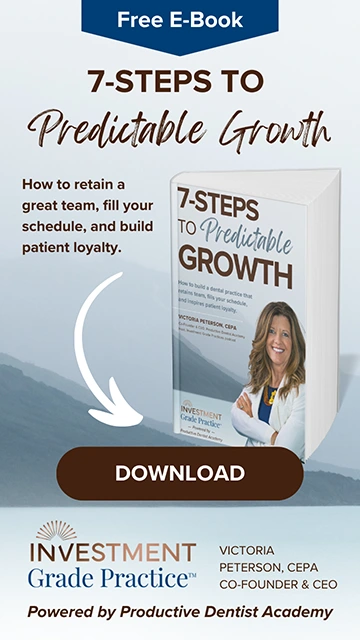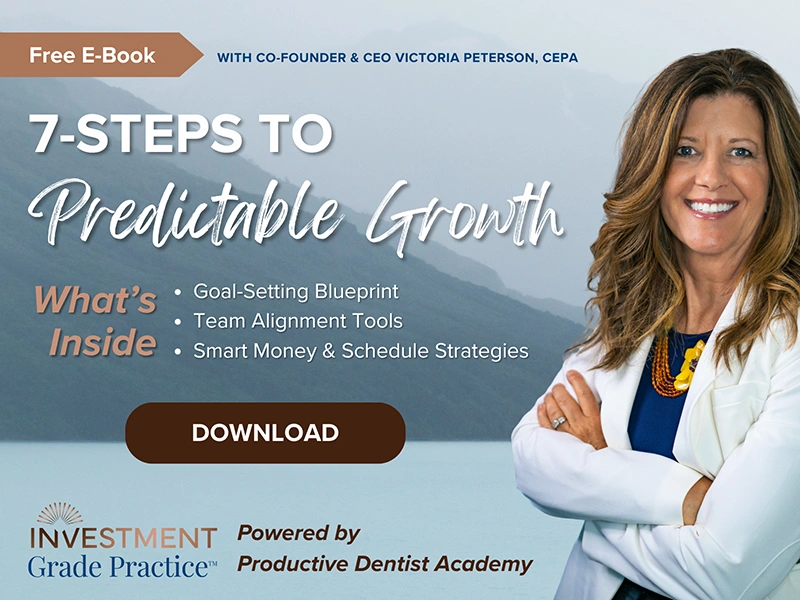How to Develop a Demand-Driven Practice
 Are you building your practice on what your patients need today? If so, your business model may be gravely outdated.
Are you building your practice on what your patients need today? If so, your business model may be gravely outdated.
“There’s an old Wayne Gretzky quote that I love,” Steve Jobs said in 2007 – ‘I skate to where the puck is going to be, not where it has been’ – and we’ve always tried to do that at Apple. Since the very, very beginning. And we always will.”
Developing a ‘demand driven’ dental practice is like skating to where the puck is going—not where it is. With all of the options patients have today, it’s critically important to understand demand. Demand is customers’ needs and desires (emotional, psychological, and physical) that they want satisfied and have the purchasing power to satisfy. Meet the demand and you can satisfy your patients better than your competitors. The key is recognizing trends and patterns in markets and customer segments to determine what customers will want in the future. “If you’re waiting to ask your customers what they need, you are already too late because they are telling your competitor the same thing they told you,” says Rick Kash, co-author of How Companies Win, a bestselling book that tells why companies must shift their attention from simply supply or service focused to demand focused.
Companies need to understand not just current demand but latent and emerging demand, says Kash. And he isn’t talking about just big businesses. One of the most compelling things about How Companies Win is that the authors’ frameworks apply as easily to dental practices and neighborhood dry-cleaning shops as they do major retailers.
“Some people see trend and see threat. Others see the same trend and see opportunity,” says Jim Carroll, a healthcare keynote and futurist. Wireless and mobile health is providing transformative opportunities in dental and overall health care. One of the big trends unfolding today is the huge velocity behind wireless and mobile health applications and the rapidity of changing patient/consumer behavior.
The statistics around mobile technology are, of course, well known, but Carroll adds that they are worth repeating:
- It took two years for Apple to sell 2 million iPhones
- It took 2 months for them to sell 2 million iPads
- It took 1 month to sell 1 million iPhone 4’s
- It took 1 day to sell 1 million iPhone 4s
- It’s estimated that Apple sold 5 million iPhone 4s’s in the first 4 days of release
But it’s what consumers are doing with these technologies that provide so much potential for innovation. With respect to health care, the numbers are quite staggering:
- 78% of consumers are interested in mobile health solutions
- Medical and health care apps are the 3rd fast growing category for iPhone and Android phones
- The Apple App store now has 17,000 health care related apps 60% of which are aimed at the consumer and focused on interactive healthcare and wellness monitoring
What we have happening here is a massive trend in which people are changing their behaviors, actions, wellness, and day-to-day routines in which they actively manage their health circumstances through the personal digital assistants which are becoming an ingrained part of their lives, explains Carroll.
The centuries old relationship between dentist/doctor and patient is changing in a massive way. Innovation is all about anticipating opportunity in the midst of these changes.
Looking Ahead: How to Predict Where Demand Will Emerge Next
Gaining a key business advantage comes from understanding the future of demand while it is still forming. There are ways that you can do this beyond simply asking your patients who often don’t always know what they want. Here are recommendations from How Companies Win:
- Think outside the box: Look across multiple markets to draw lessons to apply in your own practice, i.e. the dominance of Google, the convenient service of Zappos, etc.
- Look at consumer trends (lifestyle, workstyle, fads, demographics) to anticipate how to interact with emerging trends, i.e. iPad, mobile phone technology, gaming, social media, etc.
- Look at consumer healthcare trends outside of dentistry, i.e. 70% of adults in the U.S. are overweight; the number of adults with diabetes has more than doubled since 1980, etc.
- Look at adjacent categories to see what you can learn from best practices, successes and failures from businesses similar to your own, i.e. cosmetic surgery, lasik surgery, day spas, etc.
- Look at the most profitable segments of your own patient base to detect even small variations in their behavior and buying patterns
- The rise of social media networks has amplified the consumer’s voice. Take advantage of the real-time ability to monitor buzz on the Internet (Facebook, Twitter, etc.) to get an “over-the-horizon” view of emerging opportunities
- Check out sites such as IdeaStorm for Healthcare and Life Sciences — a community dedicated to collaboration of how to improve the efficiency of Healthcare with IT solutions. This site affords consumers the opportunity to post their ideas regarding the improvement of health care services.
Imagine the dental practice of 2020. What do you see?
Have a great experience with PDA recently?
Download PDA Doctor Case Studies


















